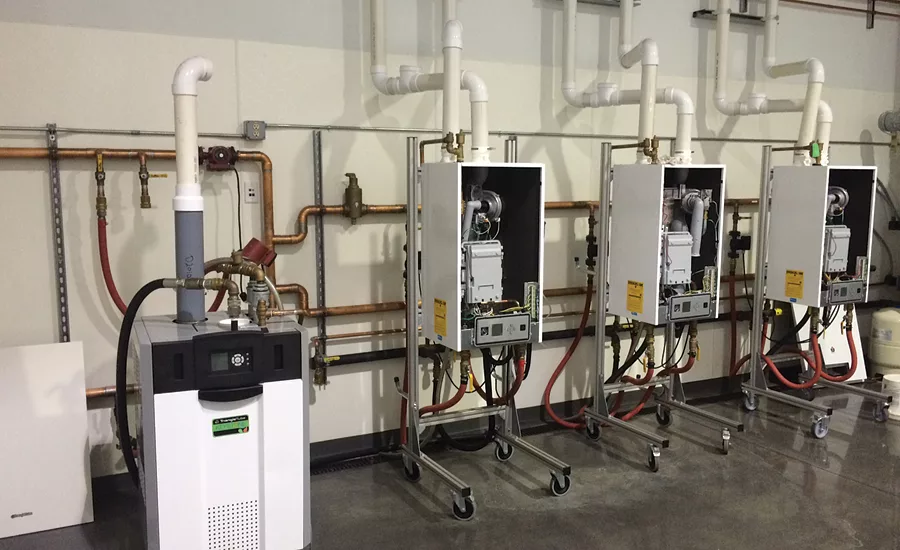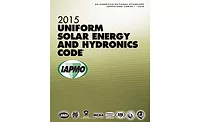Grow more skilled hydronics professionals
Homeowners choose hydronic heating because they’re looking for a level of comfort they can’t achieve with forced-air systems.


Homeowners choose hydronic heating because they’re looking for a level of comfort they can’t achieve with forced-air systems. Especially popular in mountainous areas with cooler climates, many of these homes are built for luxury and for their spectacular views, with vaulted ceilings and large windows. So when a homeowner realizes in the middle of winter that the living room is 65° F and the bedrooms are 80°, he searches for a skilled professional to correct the problem — because he doesn’t just want a beautiful home, he wants a comfortable one, too.
Unfortunately, the plumbing and HVAC industries are experiencing a severe shortage of qualified contractors. Finding service technicians properly trained in hydronics is even more challenging. Designing, installing and servicing complex hydronic heating systems requires a level of knowledge and expertise not commonly found in today’s skilled trade talent pool. So when homeowners call a plumbing or HVAC business to service their imbalanced hydronic system, they aren’t guaranteed to find a company well-trained to address the problem.
Hydronic design is art and science
When it comes to hydronics, 10 installers can receive the same set of plans for a new home and will create 10 different systems. Hydronic system design is a creative process; some systems look beautiful and function poorly, while others look bad but work great. The key is knowing the science behind how hydronic heating works — such as how homes have varying heat loss room-to-room and the solutions available to create a comfortable balance.
Almost every professional involved in the design and construction of a new home should have some level of hydronic heating training. They should understand the limitations and appropriate application of these systems so they can make a recommendation to the homeowner and do the job right.
• Architects. An architect creates homes for beauty and functionality. When a homeowner requests a hydronic heating system, there are some basic principles of heat loss the architect should understand so he can weave it into the design. As an example, a lot of glass makes for a gorgeous home with grand mountain views — but it also can mean losing comfort and efficiency.
• Installation contractors. These contractors can make or break a hydronics system. They get a set of plans for a new home that often are not conducive to an efficient heating infrastructure, and they still have to get it right. If they don’t, they have an unhappy homeowner on their hands. Installation contractors are typically on the hook to service a new hydronic heating and/or cooling system for up to one year post-installation, before the maintenance work is handed off to service contractors.
• Service contractors. For service contractors, more training may be needed than installation contractors receive. They need to understand how the system was installed and be able to troubleshoot, analyze and correct any issues. Depending on the skill of the installer, the service contractor could have a maze of nonsense on his hands to decode and remedy.
Challenges
While hydronics is growing steadily with the residential building market, it’s just one specialized segment of the heating industry and doesn’t get nearly the amount of attention that its counterpart, forced air, receives. This means fewer resources and less people focused specifically on hydronics.
• Design. One of the first challenges in designing and installing an efficient hydronics system is simply that the home wasn’t designed with the heating infrastructure in mind. Large windows and high ceilings make a beautiful home, but can result in an uncomfortable environment.
• Trade shortage. There is already a shortage in skilled plumbing and HVAC professionals. When we talk about segments of each of these professions, particularly hydronics and radiant heat, the number of well-trained workers shrinks even more.
• Lack of time to devote to training. Plumbing and HVAC businesses are overwhelmed with the volume of work coming in each day. It’s difficult for their technicians to break away from their customer visits and service jobs for formal classroom training.
• Hydronics is complex. The process of designing and installing a hydronics system is complex. It involves steps such as heat loss calculation, wiring diagrams and building a mechanical piping schematic that shows properly sized piping systems, pumps and boilers. It takes up to two years to become fluent in hydronics, with a lot of components to learn and a much more involved installation process than a forced-air system.
Tap into training
Certifications or official credentials are not currently required for a hydronics professional, but that doesn’t mean plumbing or HVAC technicians should forego training. In fact, to stay on top of the latest in the hydronics industry, training should be considered a priority throughout a tradesman’s career.
Unfortunately, due to the shortage of skilled workers, time is money and continuing education is not a top priority. However, many resources are available for contractors to tap into that can accommodate busy schedules — such as online classes, books, discussion forums and on-the-job training.
• Manufacturers. Hydronics manufacturers offer product-specific and industry training to keep professionals up-to-date on technology. Taco, for instance, offers the FloPro University, where professionals can take online courses at their own pace on various hydronic system topics. Another popular online resource is Caleffi’s Coffee with Caleffi webinars.
Chances are your go-to hydronics manufacturers offer online, classroom and onsite training; check out their websites to learn more.
• Radiant Professionals Alliance. The RPA works to increase the use of radiant technology through education, and to develop codes and standards that reflect industry best practices. It is a great resource for hydronics education, such as the RPA University, which offers online courses taught by industry professionals. The RPA also hosts HydroniX Talk, an Internet-based talk show hosted by RPA Executive Director Mark Eatherton. HydroniX Talk brings together radiant and hydronic industry experts to discuss trends and issues facing contractors, designers and builders.
• HeatingHelp.com. HeatingHelp.com, started by industry expert and Plumbing & Mechanical columnist Dan Holohan, is a valuable resource for all things heating. The website features a peer discussion board, The Wall, where experienced industry professionals share their knowledge. This is an ideal place to ask questions and learn from the experienced hydronics veterans.
• Books. Holohan also has authored several books relevant to the industry including “The Golden Rules of Hydronic Heating: How to Do Unto It Before It Does Unto You” and “Hydronic Radiant Heating: A Practical Guide for the Nonengineer Installer.” His books are engaging, smart and full of information for professionals who want to learn more about hydronics.
Other hydronic heating authors include Plumbing & Mechanical columnists John Siegenthaler (“Heating with Renewable Energy” and the third edition of “Modern Hydronic Heating”) and Ray Wohlfarth (“Lessons Learned Servicing Boilers”). You can find many of these books at www.pmmag.com/products.
• Distributors. Hydronics systems distributors with a good working knowledge of the segment may have the resources that trade professionals need to learn more about the industry and technology.
When plumbing or HVAC contractors submit a bid on a hydronics job, they can reach out to a distributor who understands the importance of hydronics design and training, and can walk them through the process.
For instance, Ferguson has a design center dedicated to hydronics — the Hydronic Training and Design Center. The design team builds efficient hydronic systems for its customers and provides the necessary training contractors need to install and maintain those systems.
Ferguson takes a progressive approach to its training, and the curriculum is designed to focus on the individual aspects of hydronics systems bit-by-bit, and then put it all together.
Ferguson’s approach to training takes into account contractors’ busy schedules by giving them realistic options to learn, including: classroom settings or one-on-one training, often brought into the contractor’s workplace; manufacturer partner training seminars, again in the contractor’s office; and on-the-job training, where a Ferguson technician goes on the jobsite with the contractor to install or service a hydronics system.
From laying out tubing, installing the pipe boiler and wiring the controls — hydronics distributors can give contractors the road map to build and maintain efficient heating systems.
Having technicians specially trained in hydronics means fewer call-backs, happier customers and more business. Most contractors skilled in hydronics say they have more fun installing these systems and they find the work to be more profitable. It’s clear this segment is appealing to plumbing and HVAC professionals; the missing link is having the right training. If they can find a way to fit education into their busy schedules, they’ll find it’s an investment in their business and their future.
Author bio: Dennis Bellanti is the hydronics manager with Ferguson (www.ferguson.com). He has been with the company since 2002 and manages the national Hydronic Training and Design Center. You can reach him at dennis.bellanti@ferguson.com.
Looking for a reprint of this article?
From high-res PDFs to custom plaques, order your copy today!






